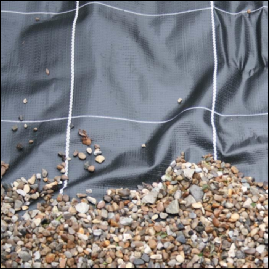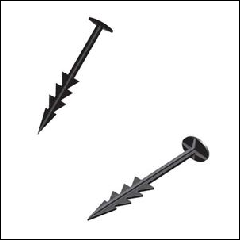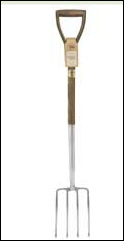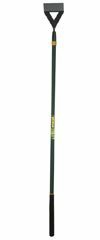








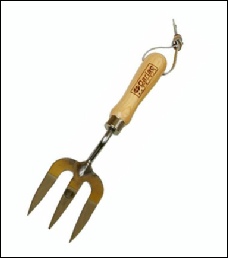


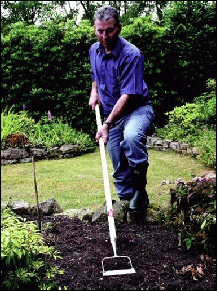


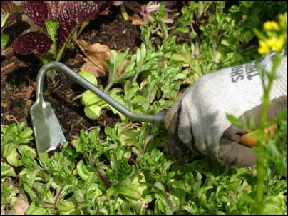
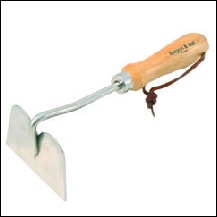




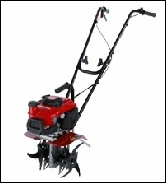






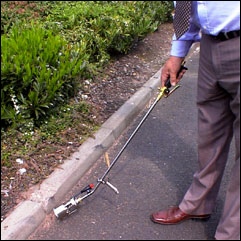
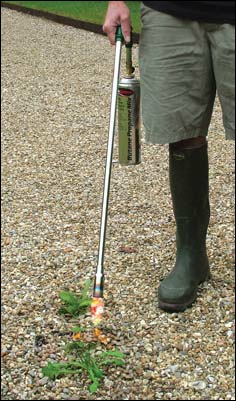








If there is one task that you will never complete in your garden or on the allotment it is weeding. It often seems that no sooner have you cleared a patch of land and turned your back that the weeds rush in and reclaim the land.
No amount of weeding will ever totally eradicate weeds. Huge numbers of seeds lay dormant in soil just waiting for the right conditions for growth. Many wait for many many years. If you take over and clear a new allotment plot, once you start to turn over the soil some weed seeds will take this as a signal to burst into life. These seeds have been waiting underground just waiting to see the light. The more you turn over the soil, the more the weeds will just keep on coming.
One thing is for certain and that is if weeds can’t flourish on your plot then nothing else will.
The key word to dealing with weeds is control - you just need to keep them in check by weeding regularly. Leave it for a while and the weeds will gain the upper hand.
Weeds are either perennial or short lived. There is more about weeds here. The way you deal with the two types is quite different. So the first things you need to do is to learn to recognise the weed. As well as the link above these links may help.
The Seeds Site
Down Garden services - Weed Leaves
Down Garden Services Weed Seedlings
Perennial weeds are the most persistent and include docks which often seem to have roots that go on forever. These weeds need to be completely removed - often easier said than done. Sometimes it a matter of getting out as much of the plant as possible and from then on keep digging up any new growth in the hope that eventually the plant will give up trying.
To remove perennial weeds you need to use a garden fork for the longer rooted specimens such as docks and dandelions. If you use a spade you can cut the roots and leave pieces to regrow. A garden fork is also useful for digging up couch grass the roots of which can travel long distances. Tease out as much of the root as possible as even tiny pieces will regrow.
For the shorter rooted weeds such as creeping buttercup a hand fork is useful.
Perennial weeds shouldn’t be placed on the compost heap. Also bear in mind that perennials seeds will be present in the soil and so more will grow. Try to catch them whilst they are still small as this way they are easier to deal with. Also remove any seed heads from perennials weeds before they have a chance to spread.
Short lived weeds don’t usually regenerate after the tops have been removed so one way of tackling then is to use a Dutch hoe to cut off the tops. This works well in warm dry weather as the tops quickly shrivel and die. I especially use this method in between fruit bushes where digging isn’t possible also cutting down the digging means that the seeds lurking underground are not exposed and set into growth. It is important though to hoe regularly before the weeds. Some weeds can grow and set seed within a few weeks.
When buying Dutch hoes bear in mind the narrower blades can access smaller spaces between plants.
I also use a hand fork for weeding short lived plants - especially in between rows of young seedlings or if the ground is damp or the weeds are quite large.
Of course if the ground is soft weeds can often be pulled out with a free tools that is available to everyone i.e. bare hands or gloved hands whichever you prefer.
In between onion plants or bulbs where weeds are growing very close to the bulb and to pull them out would mean dislodging the bulbs I find an onion hoe or hand hoe to be a really useful tool.
Another tool that I find useful for loosening the soil around plants for weeding is a hand cultivator or as I call it a claw.
If an empty bed has been left over winter it is sometimes colonised by short weed growth which could almost be classed as green manure. In these cases we often just quickly run a mini tiller over the soil to prepare for planting.
Weed Prevention
Around our some of our apple trees and our redcurrant bushes we have cut down the weed growth by using a weed control fabric which is held down by old tree branches and covered with bark chippings - read about it here.
It’s quite difficult to weed amongst the roots of mature trees and we think that the application of the weed control membrane also helps to cut down on fruit tree pests that hide in grass at the base of fruit trees.
We’re lucky in that out bark chippings are provided by the council free but you can also buy sacks often at wood merchants.
You can also buy pegs specially designed to hold down the fabric.
When we planted up our new strawberry bed we wanted to try and avoid it becoming overgrown with weeds. We lay straw under the berries to protect them from becoming dirty but we felt that the straw left lots of seeds behind which grew up close to the plants and were difficult to remove without uprooting the plants as well.
We came across a new product called biodegradable mulch which we tried and were very satisfied with the results. It was a very dry year which could have affected our results but the mulch actually lasted far longer than we expected.
The mulch was still around once the season had ended and so was added to the compost heap.
Being very lightweight it was difficult to work with and it was also a struggle to cut the very thin, stretchy fabric with scissors.
I’ve never tried using one of these but you can also buy something called a weed wand. The wand runs on butane gas and is a sort of giant cigarette lighter that burns the weeds. It is recommended for use for clearing patios and drives.
Using carpet to smother weeds
If you consider using carpet to smother weeds can I make a plea that you only use it for a short period or time. When we took over one of our plots someone had covered an area of the plot with carpet. Over time weeds had grown through it and over it. The natural fibres in the carpet had rotted leaving the man made fibres. The result was a mess that was extremely difficult to get rid of.
The RHS don’t recommend its use either as they say it takes a long time for it to become effective and will only kill the top layer of weed growth.
